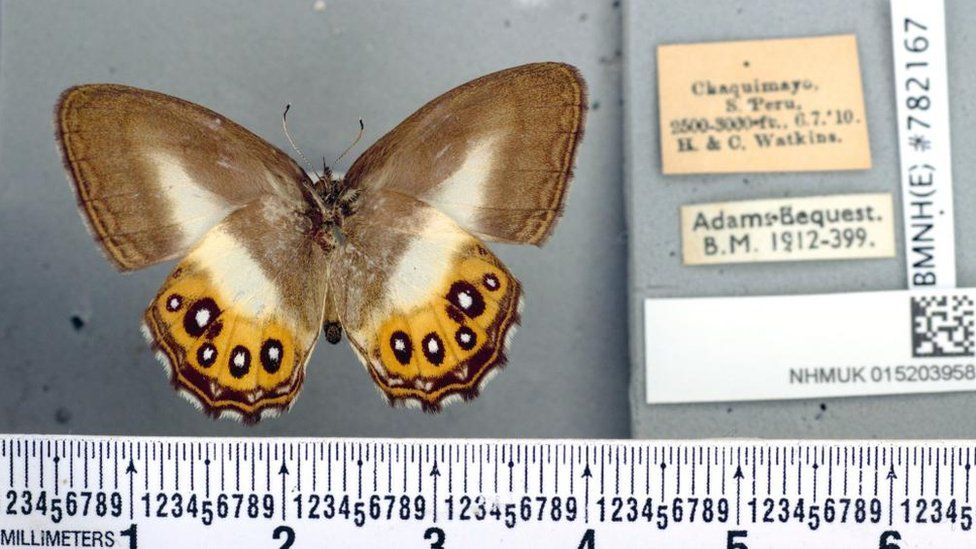Scientists have named a new group of butterflies after the villain Sauron from the Lord of the Rings novels.
Experts hit on the name Saurona because the black rings on the insect's orange wings reminded them of the all-seeing eye described in JRR Tolkien's books.
The Natural History Museum in London hopes the unusual title will draw attention to the species and help generate more research.
Two species of butterfly have been added to the newly named Saurona genus.
Saurona triangular and Saurona aurigera are the inaugural members of the group but it's expected many more species will join them.
The name was picked by Dr Blanca Huertas, curator of the butterflies at the museum, who is part of an international team who described the new genus in a paper published in the scientific journal Systematic Entomology.
A group of 30 scientists from around the world have spent a decade studying the butterfly subtribe Euptychiina.
The experts analysed more than 400 different species of butterfly, and used advances in DNA to identify the differences between them at a genetic level, as well as by their appearance.
Saurona triangula and Saurona aurigera are not the first creatures to be named after Sauron. The villain's glowing eye has also been referenced in the names of a dung beetle, a frog and a dinosaur.
The team has also found another butterfly genus, which Dr Huertas has named Argenteria, meaning silver mine, on account of the silver scales on its wings.

Comments
Post a Comment